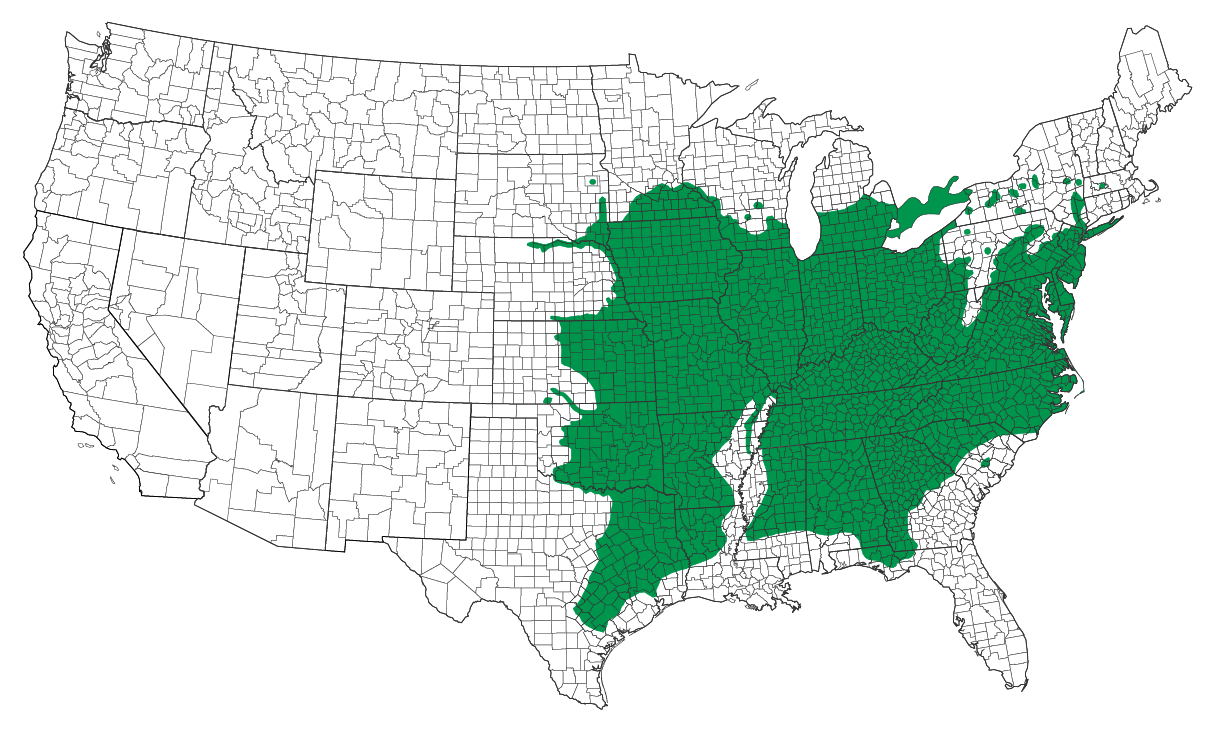Managing Black Walnut Trees in Your Permascape

Black walnut trees (Juglans nigra) are remarkable for their beauty, valuable timber, and nut production, but they pose a unique challenge for gardeners due to the chemical juglone. This natural compound can inhibit the growth of certain plants, requiring thoughtful planning and management to cultivate a successful garden near these trees. By understanding their impact and leveraging principles from permaculture, agroforestry, and edible landscaping, you can transform the area under and around black walnut trees into a productive, harmonious space.

Allelopathic Toxicity: Juglone
Juglone is a naturally occurring chemical that black walnut trees produce as a defense mechanism. It is present in all parts of the tree, including roots, bark, leaves, and nuts. Sensitive plants exposed to juglone may exhibit symptoms such as wilting, yellowing, or stunted growth. The root zone—the area most affected by juglone—can extend 50-80 feet from the trunk. Even after a tree’s removal, juglone may persist in the soil for several years, although microbial activity gradually breaks it down.
Practical Uses of Juglone
Beyond its defensive role, juglone has been explored for various natural applications, particularly in agriculture and plant health. Recent studies highlight its potential as a bio-herbicide due to its ability to suppress weed growth, offering a natural alternative to synthetic chemicals. Additionally, juglone has demonstrated antimicrobial and insect-repellent properties, making it a valuable tool in integrated pest management systems. These applications underscore the dual role of black walnut trees—both as a challenge and a resource within ecological systems.
MDPI. (2020). The Potential Use of Juglone from Black Walnut Trees for Natural Applications. Agronomy, 10(10), 1500.
Principles for Gardening Near Black Walnut Trees
- Embrace Juglone-Tolerant Plants
- Many plants are unaffected by juglone and can thrive in its presence. Consider these options:
- Vegetables: Squash, melons, beans, carrots.
- Perennials: Daylilies, bee balm, daffodils, and violets.
- Shrubs and Trees: Elderberry, forsythia, lilac, and most conifers like pine and spruce.
- Native plants often fare well under black walnut trees and contribute to a resilient ecosystem.
- Many plants are unaffected by juglone and can thrive in its presence. Consider these options:
- Layer and Zone Your Garden
- Use permaculture zoning to structure your garden:
- Zone 1: Raised beds or containers filled with clean soil for juglone-sensitive crops.
- Zone 2: A buffer area with grasses, clover, or juglone-tolerant plants to minimize the spread of juglone.
- Zone 3: The outer root zone, where tolerant plants or ground covers like fescue thrive.
- Use permaculture zoning to structure your garden:
- Enhance Soil Health
- Healthy soil supports microorganisms that help neutralize juglone. Strategies include:
- Adding compost or well-rotted manure to boost organic matter.
- Avoiding waterlogged conditions by improving drainage.
- Healthy soil supports microorganisms that help neutralize juglone. Strategies include:
- Incorporate Agroforestry Techniques
- Black walnut trees can play a role in productive agroforestry systems:
- Alley Cropping: Plant juglone-tolerant crops in rows between walnut trees to maximize space and productivity.
- Silvopasture: Introduce grazing animals like goats or sheep in the understory to manage vegetation and fertilize the soil.
- Multi-Strata Systems: Combine tree canopies with understory crops like raspberries, currants, or pawpaws to diversify yields.
- Black walnut trees can play a role in productive agroforestry systems:
- Adopt Mulching and Cleanup Practices
- Regularly remove fallen nuts, leaves, and twigs to reduce juglone accumulation in the soil.
- Use mulches made from non-walnut sources to avoid introducing additional juglone.
- Experiment with Edible Landscaping
- Create a food-producing garden under black walnut trees with tolerant crops like elderberries, pawpaws, or hazelnuts. These plants not only thrive but also contribute to a diverse and productive landscape.
- Maintain and Monitor
- Prune black walnut trees to manage their size and root spread.
- Test soil periodically for juglone levels and adjust planting plans based on the results.
Livestock Walnut Toxicity
Horses are by far the most sensitive to black walnut—primarily if it is used as shavings in bedding for stalls. With as little as 20%, horses will start to display clinical signs of toxicity within hours. Early clinical signs of black walnut toxicity include depression, limb edema, stiffness, and warm hooves. If exposure continues, horses may colic, experience extreme swelling of the neck and chest, elevated heart and respiratory rates, and high body temperature.
While sheep are not known to be sensitive to black walnut bedding, caution is advised with fallen nuts. As they decay, the husks can become toxic. Penicillium mold often affects decomposing husks and produces a neurotoxin called Penitrem A, which is toxic to livestock and can be fatal to dogs.
Grass growing around black walnut trees does not appear to harm sheep or horses. Most grasses are juglone-tolerant, and plants that are highly sensitive to juglone, such as those in the nightshade family, are already unsuitable for pastures as they are toxic to livestock. Symptoms of juglone sensitivity in plants include yellowing or discoloration of leaves and twisted growth.
To mitigate risks:
- Rake up leaves, nuts, and hulls regularly.
- Avoid using bark or wood chips from black walnut as mulch or bedding for animals.
Benefits of Integration
Incorporating black walnut trees into a garden or agroforestry system provides multiple benefits. The trees offer shade, wildlife habitat, erosion control, and valuable nuts, while proper planning ensures your garden remains productive and sustainable. Techniques such as companion planting, permaculture zoning, and multi-strata design allow for synergy between the trees and their surroundings, turning challenges into opportunities.
Conclusion
Black walnut trees can coexist with a diverse array of plants and even enhance the ecological balance of your landscape when thoughtfully managed. By understanding the effects of juglone, selecting tolerant plants, and employing sustainable gardening and agroforestry practices, you can transform the areas around these trees into vibrant, productive spaces. With creativity and care, black walnut trees become an integral part of a resilient and flourishing garden system.
Sources:
Michigan State University Extension
